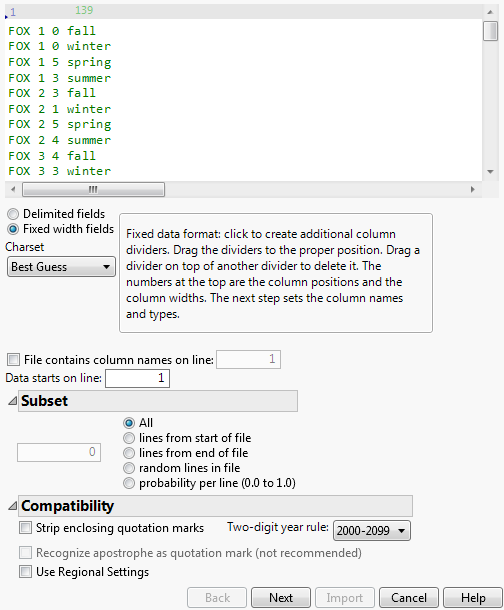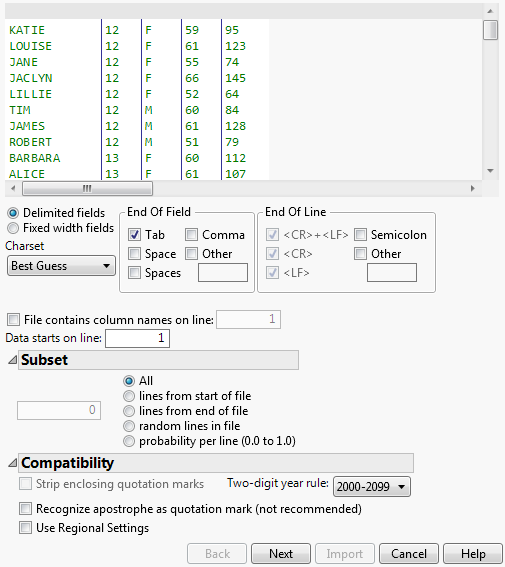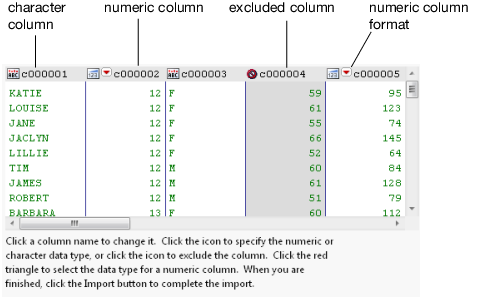JMP detects the file’s structure and shows options for importing text with either delimiters or fixed width fields. If JMP chooses the wrong file structure, click the Delimited fields or Fixed width fields radio button to import the data as the correct format. (For example, the fixed width window might appear when your file is actually delimited.)
Figure 2.48 Text Import Wizard for Fixed Width Files
Figure 2.49 Text Import Wizard for Delimited Files
(Available only in the Delimited Import window) Select the check boxes beside the character that marks the end of a field. Alternatively, select the check box beside Other and enter a character if the appropriate character is not listed.
(Available only in the Delimited Import window) Select the check boxes beside the character that marks the end of a line (row). Alternatively, select the check box beside Other and enter a character if the appropriate character is not listed. Note that when JMP finds double quotation marks, the delimiter rules change to look for an end double quotation mark. Other text delimiters, including spaces embedded within the quotes, are ignored and treated as part of the text string.
Specify how to display dates that have two-digit years. Select the 100-year range in which your dates fall. For example, if the earliest date is 2/2/79, and the year is 1979, select 1970-2069. If the earliest date is 2/2/12, and the year is 2012, select 2000-2099. If dates span centuries, you must recode the dates with four-digit years before importing the data.
When you are finished selecting the settings, click Next. The next window shows each column’s modeling type. To change the default modeling types, do one of the following:
The top of the text import window shows a preview of the text file as it appears when imported into a JMP data file. Click the Import button to import the data.
Figure 2.50 Text Import Wizard Window with Column Options
|
6.
|
When you are finished, click Import to complete the text import.
|
Tip: To automatically import numeric data into numeric columns, use the Multiple File Import option. Select File > Multiple File Import, click CSV Settings, and make sure that Make Numeric Columns from Numeric Data is selected. See Import Multiple Files for details.


